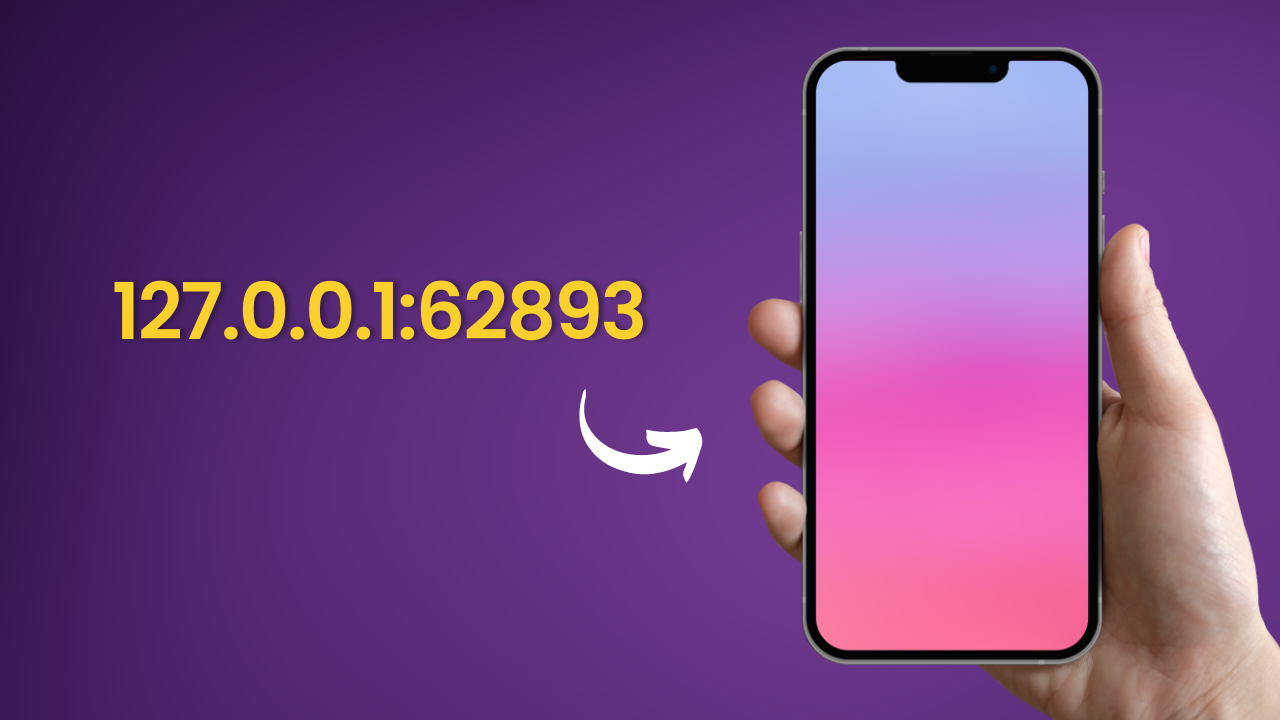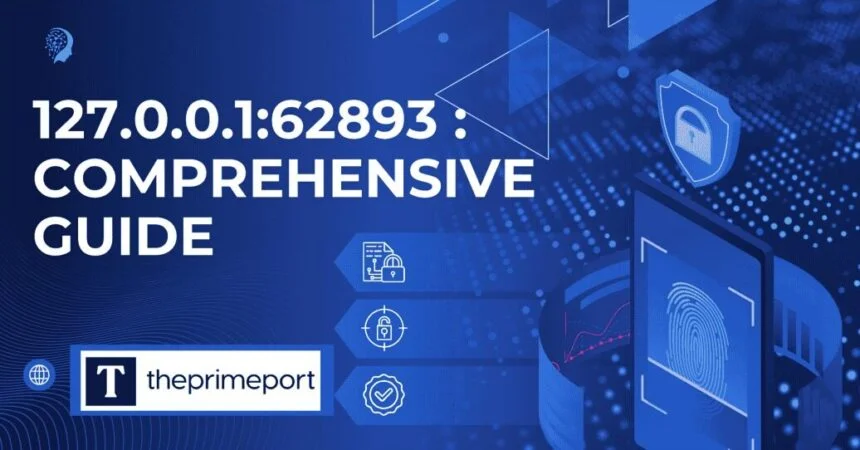Navigating the world of local servers can sometimes feel like traversing a maze. One common destination on this journey is 127.0.0.1:62893, a seemingly innocuous IP address that serves as your gateway to local-host activities. Whether you’re a developer testing applications or simply exploring the ins and outs of network configurations, it’s crucial to understand how this particular address works—and what happens when things go awry.
You’re not alone if you’ve ever encountered hiccups while trying to access this port. These issues can be frustrating and confusing, from connection errors to security warnings. But fear not! This guide will help demystify the challenges associated with 127.0.0.1:62893 and provide practical troubleshooting steps to get back on track quickly and efficiently.
Let’s dive into what makes localhost tick and tackle those pesky problems head-on!
Understanding the IP Address 127.0.0.1:62893
The IP address 127.0.0.1 is often called the “loopback” address, a special designation in networking that directs traffic back to your computer. It’s a vital tool for developers and network administrators, allowing them to run tests without relying on an external server.
The port number 62893 adds another layer of specificity. Each application on your machine listens at a unique port, enabling multiple services to operate simultaneously without conflict. When you access 127.0.0.1:62893, you target a particular service or application configured to use this port.
This setup makes local testing and development seamless while keeping interactions safe from outside interference—after all, what happens on localhost stays there! Understanding this address can empower you with the knowledge needed for efficient troubleshooting when issues arise in your local environment.
What is a local host?

A local host is your computer’s way of referring to itself. It’s a standard networking term, specifically concerning IP address 127.0.0.1.
When you use localhost, you access services and applications hosted on your own machine rather than over the Internet. This allows developers to test websites or software locally without needing an external server.
The beauty of Localhost lies in its simplicity and speed. With minimal setup, you can run scripts, databases, and web servers all from your device.
Localhost acts as a sandbox for experimentation—perfect for coding or debugging projects before they go live. This feature protects both yourself and users from potential errors that might arise during development stages.
It provides a safe environment where innovations can flourish without outside interference.
Common Issues with 127.0.0.1:62893
When working with 127.0.0.1:62893, users often encounter a few common issues that can disrupt local development or application testing.
One frequent problem is connection errors. These usually arise when the server isn’t running or misconfigured settings are present in your application.
Another headache is security warnings from browsers, which may flag local-host connections as insecure. This can be frustrating when trying to test out web applications locally.
You might also stumble upon unknown applications using port 62893, leading to confusion about what’s occupying the space meant for your project. Identifying these rogue processes often requires some detective work.
Understanding these challenges helps streamline troubleshooting efforts and enhances your experience working with local host setups.
Troubleshooting Steps for Each Issue
Start by checking your network settings when facing a connection error with 127.0.0.1:62893. Ensure the service you are trying to access is running and configured correctly.
For security warnings, inspect your browser settings or firewall configurations. Sometimes, overly strict security measures can block legitimate local traffic.
If an unknown application uses port 62893, run a command prompt check on active connections. Use commands like `netstat -ano` to identify which process might be causing the conflict and take appropriate action.
Restarting your computer can also resolve many temporary issues related to local connections.
Consider clearing your browser cache as well; it may help eliminate persistent errors linked to outdated data stored in your system’s memory.
Tips for Preventing Future Issues
To keep your experience with 127.0.0.1:62893 smooth, proactive measures are critical.
Update your software and applications regularly. This practice ensures you benefit from the latest features and security patches that can mitigate potential problems.
Use a reliable firewall to monitor incoming and outgoing traffic on your local machine. Setting up rules can help prevent unauthorized access or interference with your local host.
Consider documenting any changes you make to configurations or settings related to 127.0.0.1:62893. This will provide a reference point for troubleshooting if issues arise later on.
Important files should also be backed up regularly, so even if something goes wrong, you won’t lose valuable data.
Follow tech blogs or forums dedicated to networking topics relevant to localhost usage to stay informed about network practices and threats.
Conclusion
Troubleshooting issues with 127.0.0.1:62893 can feel daunting, but it doesn’t have to be.
By understanding the nature of localhost and its unique IP address, you can tackle most problems head-on.
Knowledge is your best ally when navigating connection errors or security warnings.
Staying proactive with routine checks will save time and frustration down the line.
As technology evolves, so do potential pitfalls; being informed means you’re always one step ahead.
Remember that community forums and support resources are invaluable assets during challenging moments on this journey through local hosting challenges.
Introduction to 127.0.0.1:62893
The IP address 127.0.0.1 is often referred to as “localhost.” It represents your computer’s loopback interface, allowing it to communicate with itself. This self-communication can be pivotal for testing and development purposes.
When we add port number 62893, we’re narrowing down a specific service or application running on that localhost. The combination of this IP address and port creates a unique channel for various applications to interact seamlessly without needing external internet access.
Developers frequently use this setup to troubleshoot software, run web servers locally, or simulate network environments before deployment. Understanding how to navigate issues related to 127.0.0.1:62893 can significantly enhance productivity and reduce frustrations during development processes. Being familiar with this concept lays the groundwork for more efficient problem-solving in local hosting scenarios.
What is the purpose of 127.0.0.1:62893?
127.0.0.1:62893 is used for local development and testing environments. This IP address, often called “localhost,” allows developers to run applications on their machines without exposing them to external networks.
Port 62893 is typically assigned for specific services or applications that require a unique communication channel. It enables these programs to interact seamlessly with the system while keeping everything within the device.
Using 127.0.0.1:62893 means you can troubleshoot your application in isolation, ensuring it behaves correctly before going live on a public server.
This setup fosters an efficient workflow, allowing developers to iterate quickly and catch issues early in the coding process. This ultimately leads to smoother deployment later on.
Common issues with 127.0.0.1:62893
When dealing with 127.0.0.1:62893, users often encounter a few common issues that can disrupt their workflow.
One frequent problem is connection errors. These occur when the local server refuses to respond, leaving you frustrated and wondering what went wrong.
Another issue involves security warnings popping up unexpectedly. Browsers sometimes flag localhost connections as unsafe due to various settings or misconfigurations.
Additionally, you might discover an unknown application occupying port 62893. This can lead to confusion about which software is running and why it’s interfering with your intended use of the local host address.
Each of these challenges can halt progress on projects requiring local hosting solutions, making it essential to identify and resolve them promptly for smooth operation.
Troubleshooting steps for each issue:
Connection errors can be frustrating. Start by checking your network settings. Ensure you are connected to the correct network and that any firewall isn’t blocking access.
If you’re facing a security warning, it may stem from SSL certificates. Verify if the certificate is valid or consider bypassing it for local testing. Always exercise caution when doing this.
For unknown applications using port 62893, quickly check with netstat commands in your command prompt or terminal. This will identify which application occupies the port, allowing you to take necessary actions like terminating the process or changing its configuration.
Each issue has its unique solution, but taking methodical steps can help streamline troubleshooting efforts effectively. Stay calm and patient as you navigate these challenges; solutions often lie beneath the surface.


